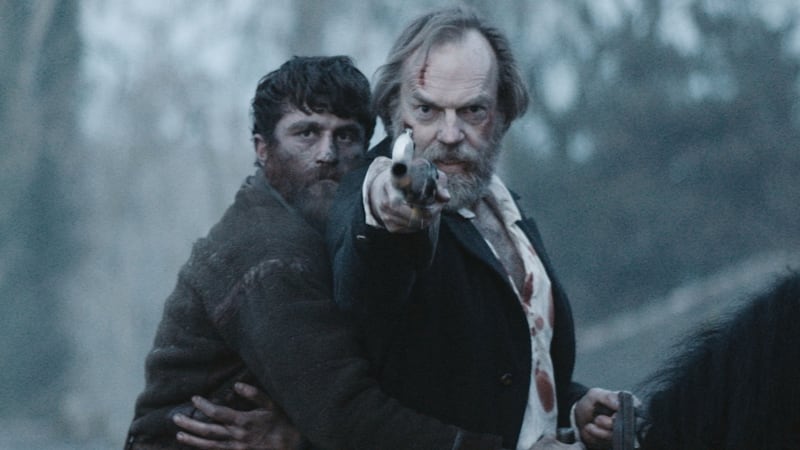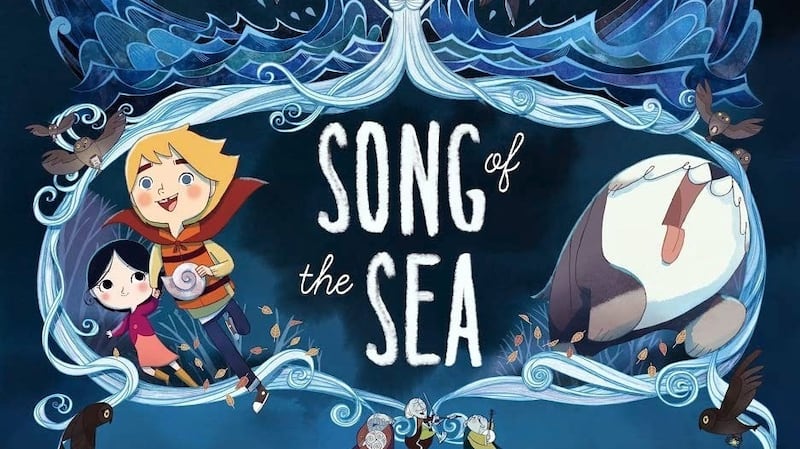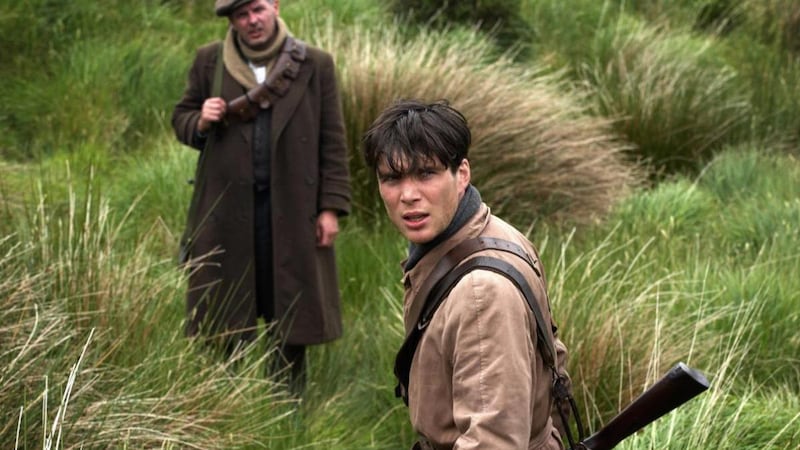Had they stopped to consider it, the audiences queueing for this year’s unexpected box office hit and awards darling, The Favourite, might have been forgiven for assuming that what they were about to see was a British film. Of course, we know how wrong they were. The Favourite was an Irish film.
So too was its Greek director's earlier The Lobster, though that, at least was set in Ireland, and starred Colin Farrell. As did The Killing of a Sacred Deer, another Irish production from director Yorgos Lanthimos that reworked Greek tragedy for a modern story relocated to somewhere in North America and co-starring fellow Irish actor, Barry Keoghan.
Time was, it was easier to spot an Irish film. They were more often than not rural dramas with tragic backstories, brooding male heroes, shattered families, and somewhere in the background the lurking influence of the Catholic Church. They spoke to the dominant social concerns of the day, if not the national question. Today, you might well wonder if anything as coherent as a national cinema remains; or even if it should.

It's convenient to date the major shift in Irish filmmaking to the turn of the new century. Within the space of around 10 years, the Troubles officially ended; we became defined, love it or hate it, by the Celtic Tiger, and the digital camera arrived to the promise of cheap, accessible filmmaking for all. In the hands of an emerging generation of new filmmakers, it became the tool to tell fast moving tales of the city, often shot as a grainy, blurred space, populated by gangsters and marked by violence and dislocation.
These city films could equally be rom-coms (When Brendan Met Trudy, 2000), musicals (Once, 2007) or horrors (The Canal, 2014). Indeed, it was the rise of the low budget Irish horror film that really defined the generational shift. Made by self-trained movie buffs as often as film school graduates, it didn’t restrict its attentions to the city but spread its tentacles out to reach into the Irish countryside and find unspeakable nastiness lurking there.
Not everyone was enamoured of the new turn to genre filmmaking. It seemed like a betrayal of the seriousness of purpose that had accompanied the work of an older generation, the pioneers of Irish independent cinema like Cathal Black, Joe Comerford, Pat Murphy, or Bob Quinn.
Whatever had happened to Irish cinema, it now looked dangerously like an artform in the embrace of globalisation
Nor was it obviously the kind of art cinema that made Neil Jordan a serious contender when awards came around, or the socially-engaged oeuvre of Jim Sheridan. Serious works about history, religion, and rural life became the preserve of a handful of left-leaning British filmmakers. Ken Loach made The Wind that Shakes the Barley (2006) and Jimmy's Hall (2014); Peter Mullan The Magdalene Sisters (2002) and Stephen Frears Philomena (2013).
Then along came Lance Daly with mega-hit Black '47 (2018) and turned Irish historical filmmaking upside down with a new avenging hero plundered from that most American of genres, the Western.
Whatever had happened to Irish cinema, it now looked dangerously like an artform in the embrace of globalisation; a sensitive issue in a country regularly name-checked as the most globalised in the world. Yet, filmmaking is a global industry. Small countries like ours cannot fund even mid-budget films from local sources.
Hence the importance of co-production funding – the practice of raising capital from multiple different international sources – once routinely dismissed as the key ingredient in the “europudding”. It used to be de rigueur to critique such productions for their loss of national specificity; but canny producers have learned to balance international funding off against local storytelling so as to render the one invisible in the creation of the other. Who after all noticed that Black ‘47 was part shot in Luxembourg?


The arrival of the new generation of Irish filmmakers has been accompanied by the proliferation of Irish production companies. If Element Pictures is the best known and the biggest of them all, raising its game each time it funds a new film by Lanthimos or Lenny Abrahamson, it only has to look over its shoulder to see the competition edging up. Our production companies are run by smart, switched-on people, who have mastered the art of the deal.
Most globalised of all is Ireland's burgeoning animation industry
Forever balancing funding from Luxembourg, Canada, French or Swiss TV, they make Irish films, European films, American films, short films, documentaries and, increasingly, TV drama. They manoeuvre through tax credits, state funding applications, casting demands, location shoots, marketplace deals and festival screenings to ensure that Irish films are made and Irish filmmakers make films.
Most globalised of all is Ireland’s burgeoning animation industry. Where once we were a tax-break on the way to Hollywood (major product the Teenage Ninja Turtles), we now are home to a cluster of Irish-run production houses, of which the best known are Brown Bag and Cartoon Saloon. Consumed by millions of children worldwide, their output includes Doc McStuffins, Octonauts, and Skunk Fu! In other words, animations that are as Irish as Viagra.
But these are the companies that have a permanent table at awards ceremony after awards ceremony. Cartoon Saloon has received an extraordinary three Academy Award nominations for its features: The Secret of Kells (2009), The Song of the Sea (2015) and The Breadwinner (2017). Brown Bag's breakthrough was Give Up Yer Aul Sins (2001), which they followed up with another Academy Award nomination for Granny O'Grimm's Sleeping Beauty (2010). Yet these Irish-themed animations are labours of love, and their critical success has not been matched by their financial returns.
As much as Irish cinema is reliant on co-production funding, so it cannot exist without state support, much of it channelled through Screen Ireland (formerly the Irish Film Board) and the tax-break system, Section 481. The Arts Council also plays a part, though more in the non-commercial sector. Nearly every Irish film is financed by a combination of co-production funding, Screen Ireland and Section 481.

Without access to these supports, major releases such as Room (2015), Brooklyn (2015), or Black ‘47 (2018) would never have seen the light of day. Yet, for every high-profile Irish release, there is a smaller film that receives equivalent State funding only to vanish from sight with just the crushed cans from the launch party to remind the world of its existence.
'Irish films were neither technically accomplished nor intelligent'
Before the release of Calvary, John Michael McDonagh controversially stated in interview that his was not an Irish film. Irish films, he continued, were neither technically accomplished nor intelligent. Calvary was just set in Ireland, with a lot of Irish characters.
Most importantly, when making a not-Irish film in Ireland, it was crucial to convince the Irish audience that it wasn’t like all those terrible Irish movies they’d seen before. Rather evidently, much of this was rubbish, not least because Calvary’s Yeats Country setting, its themes of clerical sexual abuse, and the casting of not one but two members of the Gleeson family made it a thoroughly Irish film.
Yet underneath McDonagh’s self-aggrandising dismissal of Irish cinema, there lurks a certain truth. Should we support as many films as we do and leave them to take their chances in the marketplace, or should we be more selective, more interventionist, more commercially-driven?
Neo-liberalism dictates that the value of a product is decided by its income-generating capacity. The arguments for continued government investment in film are consistently made on the (justifiable) grounds of direct employment in the sector, and indirect employment in secondary sectors such as accommodation, catering, and tourism.

Yet, when the Celtic Tiger collapsed and we crashed to earth with humiliating consequences for our national reputation, what did the government turn to to salvage our miserable selves? Culture, of course.
The ‘Imagine Ireland’ campaign saw to it that the outside world was treated to a dazzling array of Irish cultural events, including films, many of them playing at festivals aimed at reminding the diaspora of our long tradition of artistic excellence (and thereby predisposing them to return as visitors, or investors, or both).
We need to move beyond the strictly instrumentalist approach to funding film to understanding its cultural value, and not just in response to a crisis. That means taking risks. It also means supporting films that have pretty much no commercial future.
Of course, Irish filmmakers want to succeed in the market place. They want their films to play in cinemas and to be available on viewing platforms. Nobody makes a film expecting that no one will want to see it.
Most Irish filmmakers, if you ask them, make films that explore and challenge aspects of being Irish. The majority of Irish-made films remain Irish-set and Irish-themed. The Celtic Tiger-era cinema, for the most part, firmly refused to be taken in by the glitz of new money, insisting instead on poking around in the darker recesses of Irish life.

Lenny Abrahamson's Irish trilogy Adam & Paul (2004), Garage (2007), and What Richard Did (2012), alongside Prosperity (2007), the ironically titled TV series made with Mark O'Halloran for RTÉ during the boom years, quietly dismantled our assumptions around outsiders, dependency, class, community and criminality.
Culture needs state support. It also must be free to express its own ideas
The unsung heroes of Irish cinema, the documentary makers, have long challenged big business (The Pipe, 2010; The Lonely Battle of Thomas Reid, 2017) while chronicling the people and spaces that make up the nation (One Million Dubliners, 2014; The Queen of Ireland, 2015; Making the Grade, 2017, and many more).
Culture needs state support. It also must be free to express its own ideas. But state support is entitled to make its own demands. Screen Ireland is just one of a number of organisations that has stepped up to include fiscal incentives for women filmmakers.
We cannot keep expecting that our women writers and directors work on miniscule budgets or confine themselves to relationship movies. Nor is it true that only women filmmakers can make films that foreground female subjectivities in a complex, thought-provoking manner. We need a little more consciousness-raising in that regard. Our attention to the lives of Ireland’s recent immigrants or traditionally neglected ethnic groups is primitive.
Accompanying a smiling picture of new Taoiseach, Leo Varadkar, on the cover of Time magazine of 24 July 2017, was a quotation from the interview with him in which he pronounced Ireland to be "an island at the center of the world". The wider point concerned Ireland's connectedness to the major global economies. The same might be said about Irish cinema; in most instances, it is defined by the geographical entity that is Ireland, but it is funded by and speaks to a global network of film producers and consumers.
To resist globalisation, we need to insist on the importance of the local, whether that's local food, local dialects, local industries
To resist globalisation, we need to insist on the importance of the local, whether that’s local food, local dialects, local industries. At its most successful, Irish cinema tells local stories that resonate as much abroad as they do at home. It may tell stories that have nothing to do with what it means to be Irish. There is no sense that the nation it constructs in its varied narratives matches any one person’s understanding of what Ireland may actually be. It’s faulty, often maddeningly unfinished, occasionally wonderful. We need it today more than ever.
Ruth Barton is associate professor in film studies and head of the School of Creative Arts, Trinity College Dublin. Her book, Irish cinema in the twenty-first century, is published by Manchester University Press.











